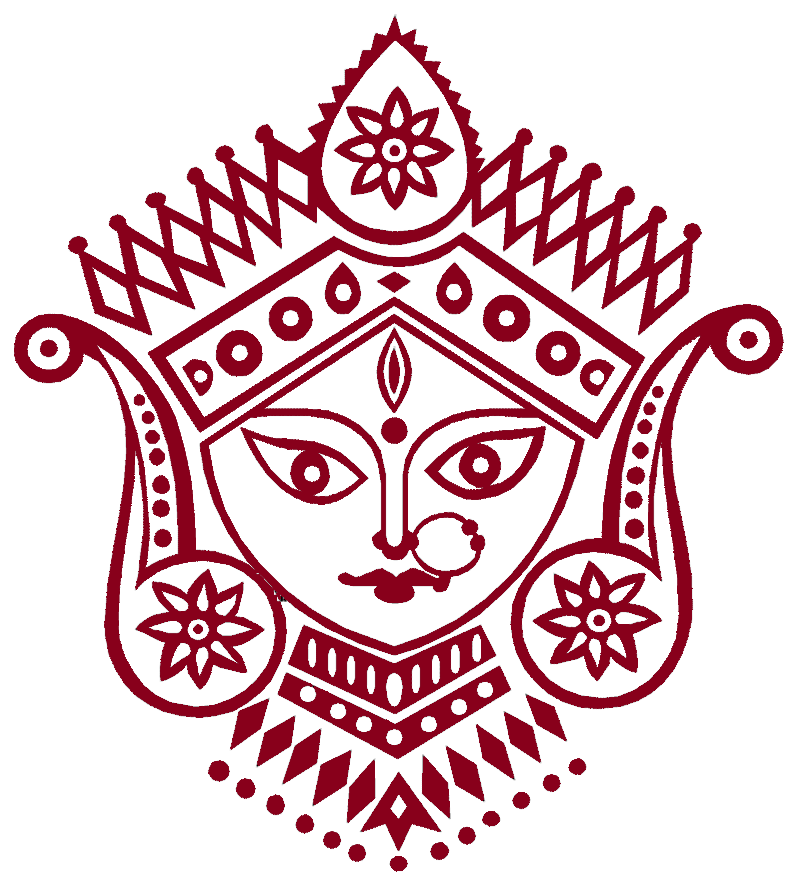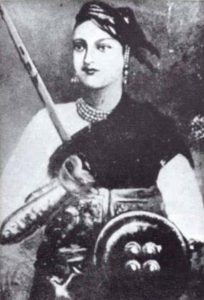Rani Lakshmibai, the Warrior Queen of Jhansi
Very different from a stereotypical Indian princess, hers is a story of
martial bravery, determination, and fearless independence.


Jhansi, Uttar Pradesh
Manikarnika, or Lakshmibai, was a woman whose story captivated me when I first read it in a book about the Indian Mutiny. It was 1995, and Afrika and I were in India because I had landed a well-paid short-term job supervising the Italian delegation participating to the XII international Trade fair in Delhi. I had just closed my home and bank account, sold most of my possessions, and was starting what I hoped would be a new nomadic life. The plan was to spend six months in India, fly to Bangkok, and somehow enter Indonesia through some land or sea border where it would be easier to smuggle Afrika into the country, which didn’t accept dogs. Once there we would island-hop all the way to the mysterious Banda Sea, which was not covered by the guide books and – hopefully – still untouched by modern tourism.
I dedicated this India journey to visiting the important sites related to the Raj, including Lucknow where the mutiny started. From there we caught a small sail boat to Varanasi, where we spent two weeks in a room right above the main burning ghats, inside a hotel used by Indians who came to attend a cremation. This idea had to do with a wish to come to terms with death, and any possible fears I might have about it. All I did in those days was watch bodies burn from the comforts of my room, all the while salivating from the barbeque smell.
From there we caught a train to Khajuraho, and stopped in Orchha before reaching Jhansi, from where we would catch a train to Mumbai, and fly to Bangkok.
However, on the day before our departure from Orchha’s fabled fort complex, two Dutch men arrived driving luxurious Toyota Land Cruisers. They were on the way to Tibet, where they would sell the cars to a Chinese dealer waiting for them near the border. I befriended them, and they asked if I wanted to join them. Since the ride included a helicopter flight from the Tibetan border to Kathmandu, I accepted gleefully, hardly thinking about it twice. After all, I could fly from Bangkok from Kathmandu, and, since it was now April and super-hot, arrange the onward journey in the cool mountain air.
That’s why I never saw Lakshmibai’s fictitious tomb, or the fortress she defended so well. However, her courage and determination continued to inspire me, as I know it will inspire others.
Who was Lakshmibai?
Her real name was Manikarnika, and she was a high caste Brahmin born in the early 1800s to a Marathi family living in Varanasi. Her mother died when she was four years old, and she was raised by her father’s employer who, yielding to her strong and independent character, allowed her to practice archery, horsemanship and even self-defense – all of which were extremely unusual sports for Indian girls.
At 14 she was given in marriage to the childless Maharaja of Jhansi, then forty-five. Jhansi had been part of the land given to the maharaja of Orchha by the Mughal Emperor Jahangir, but had been wrestled from his descendants about 100 years before, when the expanding Maratha army needed a foothold near the Mughal centers of power they wanted to attack.
The Marathas was a powerful and independent warrior group originally from Pune, near Mumbai. They are credited with the ultimate demise of the Mughals, and were the builders of the last pan-Indian Empire, only eventually defeated by the British through three gruesome and difficult wars. Both Manikarnika and the Maharaja were Marathas in origin.
Once married, Manikarnika took the name of Rani Lakshmibai, following the Maarathi tradition whereby married women are given a new name. Her rebellious young tendencies were quickly tamed to suit the expectations of a young queen, none of which included shooting muskets or swinging swords while keeping the reins of the horse in the mouth. At court, she must have exercised her inborn courage in altogether different ways, especially considering it took her nine whole years to produce the precious heir, and that this boy died when he was only four months old.
The Maharaja her husband, now old and feeble, decided to adopt a young cousin in order to secure the Jhansi lineage. This was done in the presence of a British Political officer, so that his status would be recognized by the British Raj. However, when the Maharaja died just two years later, the then British Governor-General Lord Dalhousie rejected the young boy’s claim to the throne, and annexed Jhansi and its territories. Lakshmibai was offered a pension while being ordered to leave her palace at the fort, but she refused to go. She was only 25.
The British allowed her to remain in her royal quarters, on the promise that she leave all matters of government to the British. From then on she kept herself busy with a strenuous and methodical daily timetable which started at four in the morning, including time with her adopted son, worship, meditation, prayer, feeding the hungry, giving alms to the poor, and, now able to make her own decisions, a few hours practicing her favorite sport: the martial arts on horseback.
Her physical training came in handy four years later, during the Indian Mutiny, which saw Indian troops rebel against the British on account of, among other things, rumors that the cartridges for their rifles contained either pork or beef fat, which were offensive to either Muslims or Hindus. The Jhansi fort was raided by one such rebel regiment, who sized the royal treasure and massacred all the British officers living there, including their wives and children.
When they left town four days later, Lakshmibai found herself to be the only source of authority in town, and assumed administrative control. She wrote to the British explaining the events, while assuring them that she was only managing the district until the arrival of a British superintendent. The British didn‘t believe her, assuming that she was behind the original attack.
It was in this moment of apparent weakness that the maharajas of Orccha and Datia attacked Jhansi with the intention of reclaiming lost territory and dividing Jhansi between themselves. To protect her dominions the queen forged cannons and raised a small army, which included men from Jhansi’s vassal states as well as mutineers who had remained after the massacre.
She defeated the attackers by leading the troops herself, causing large losses in the Orchha army. The British applauded the attacks on Jhansi, and later thanked the Orchha Maharaja by honoring him with a 15-gun salute.
 There is a picture of the Rani at this time, moonfaced and soft lipped, wearing a choker made of pearls, her head wrapped in a cloth turban, her sari thrown over the shoulder and worn under a massive metal protective belt. Her arms are clad in embossed armor-plates, and her hands yield a sword and a shield. I imagine a diminutive figure with tremendous charisma, fighting from horseback men double her size. Courageous, unyielding, commandeering, yet soft and sensitive – the very essence of the Mother India Heroine.
There is a picture of the Rani at this time, moonfaced and soft lipped, wearing a choker made of pearls, her head wrapped in a cloth turban, her sari thrown over the shoulder and worn under a massive metal protective belt. Her arms are clad in embossed armor-plates, and her hands yield a sword and a shield. I imagine a diminutive figure with tremendous charisma, fighting from horseback men double her size. Courageous, unyielding, commandeering, yet soft and sensitive – the very essence of the Mother India Heroine.
The British were so busy quelling the mutiny elsewhere that they returned to the Jhansi problem only a year later, asking the Rani to relinquish her control. In response, she issued a proclamation of independence. After all, she had by now lost trust in their good intentions, the fort was well fortified, she commanded a relatively well equipped though small army, people loved her, and she was waiting for the reinforcements sent by another rebelling Maharaja.
However, the reinforcements didn’t arrive on time, and when the British attacked she was alone to withstand them. The battle lasted two whole weeks, at which point the British managed to breach the fortifications, enter the city, and start a wanton massacre of its inhabitants, sparing no one. It was only then that the Rani, with the young adopted son strapped to her back, mounted her stallion and fled the city to became a rebel.
What followed was a month and a half of hopeless efforts aimed at the overthrow of colonial rule in India, during which she joined other rebellious leaders and eventually defeated the Maharaja of Gwalior, taking over his fort. The British sent the dreaded Hussars to attack the city, and it was in this battle that Lakshmibai died.
There is an eyewitness account describing the Rani, dressed as a cavalry leader, attacking one of the Hussars: she was unhorsed and wounded from his sabre, fired and wounded the Hussar with her pistol, who fired back with his carbine. She was 30 years old.
Although she had been cremated and her ashes buried with great ceremony under a tamarind tree by the rock of Gwalior, there is a proper tomb-monument built for her in the city.
It was supposed to be my next stop before reaching Mumbai, but the Dutch men I met in Orchha changed my life. I never went to the Banda Sea; instead, I got stuck in Kathmandu trying to source the veterinary papers need by Afrika to fly. One thing led to another, and I ended up in Lhasa, starting the one-year journey described in my upcoming book series A Love Affair with the Unknown.
Don’t Miss the Next Story!


